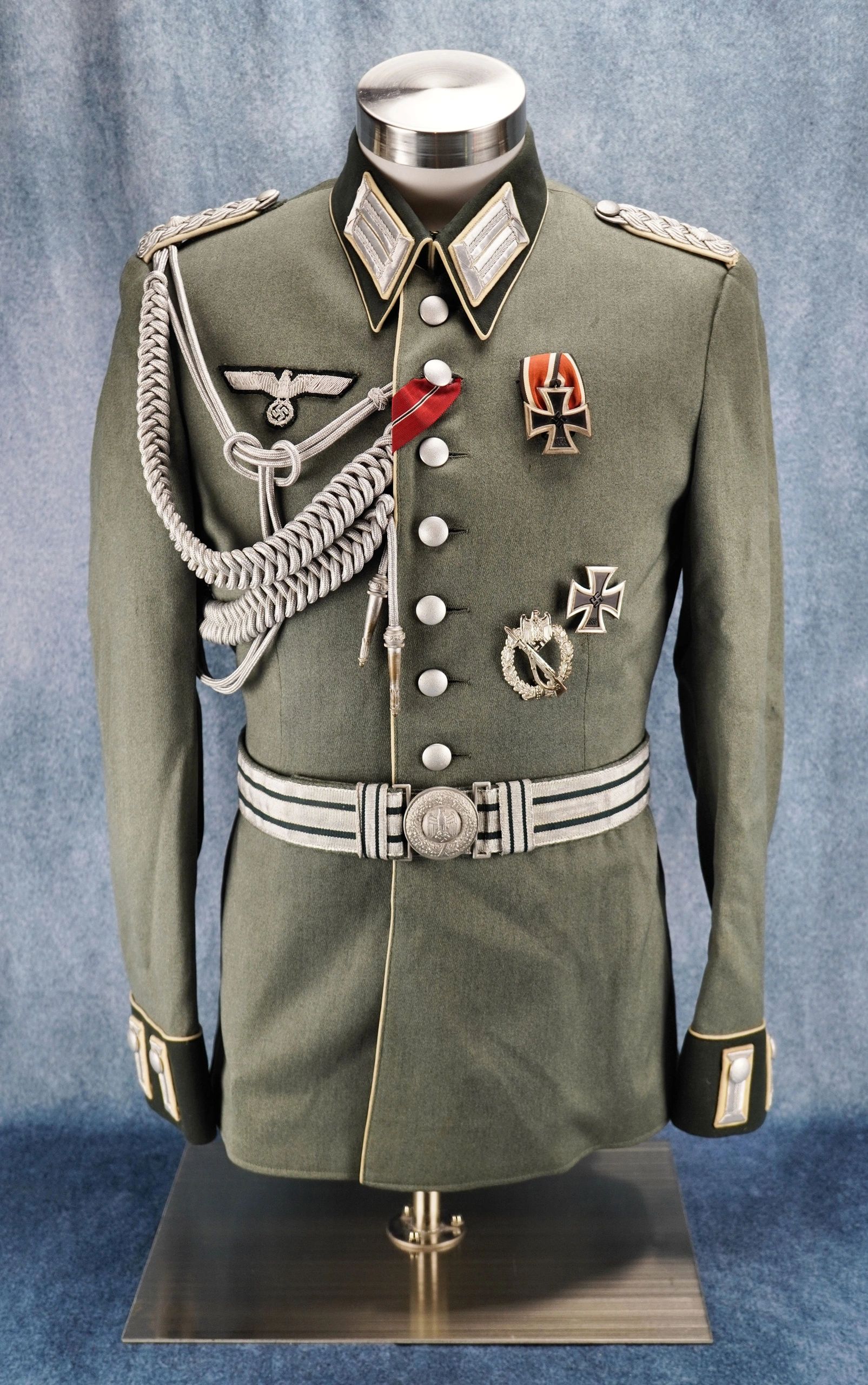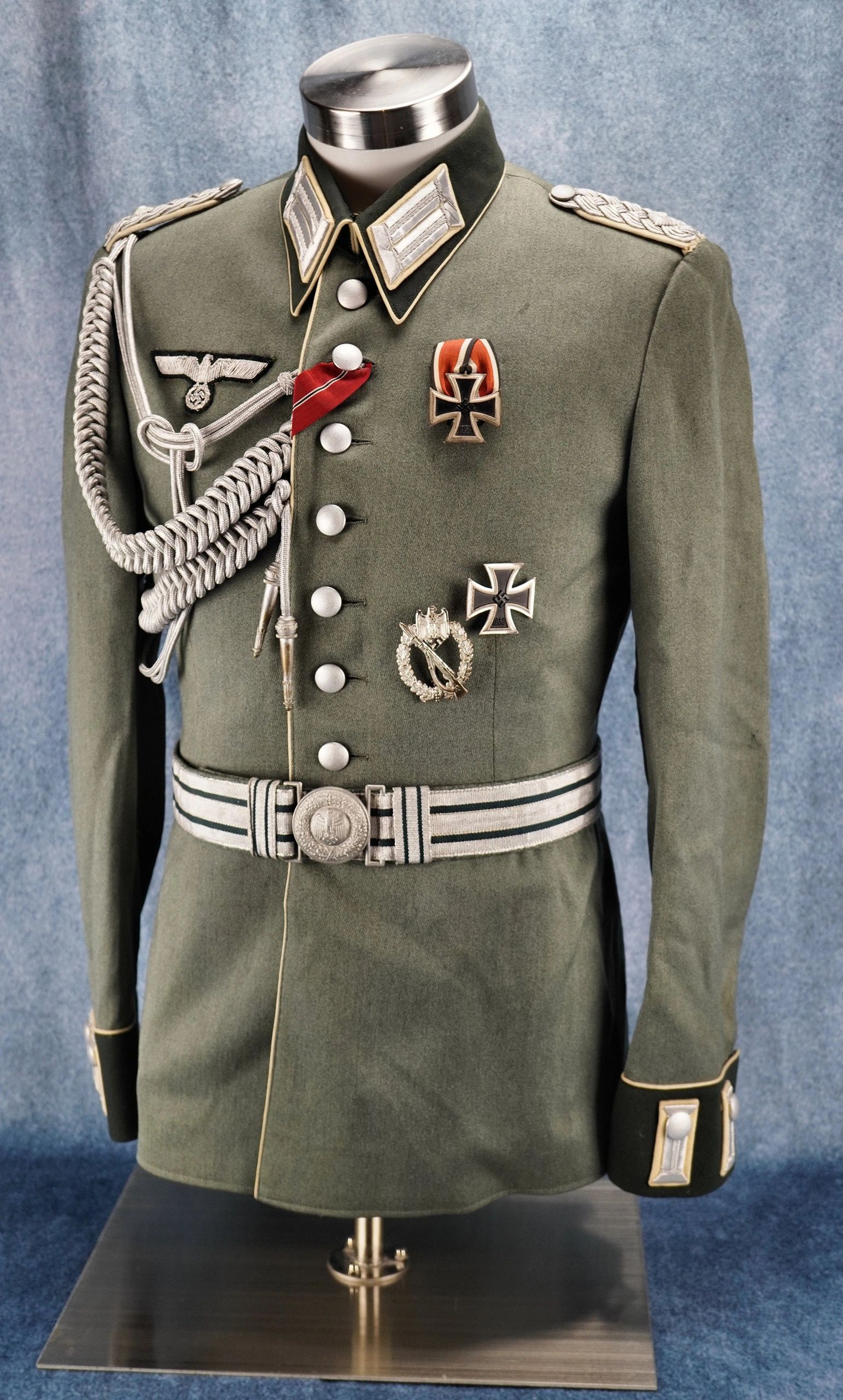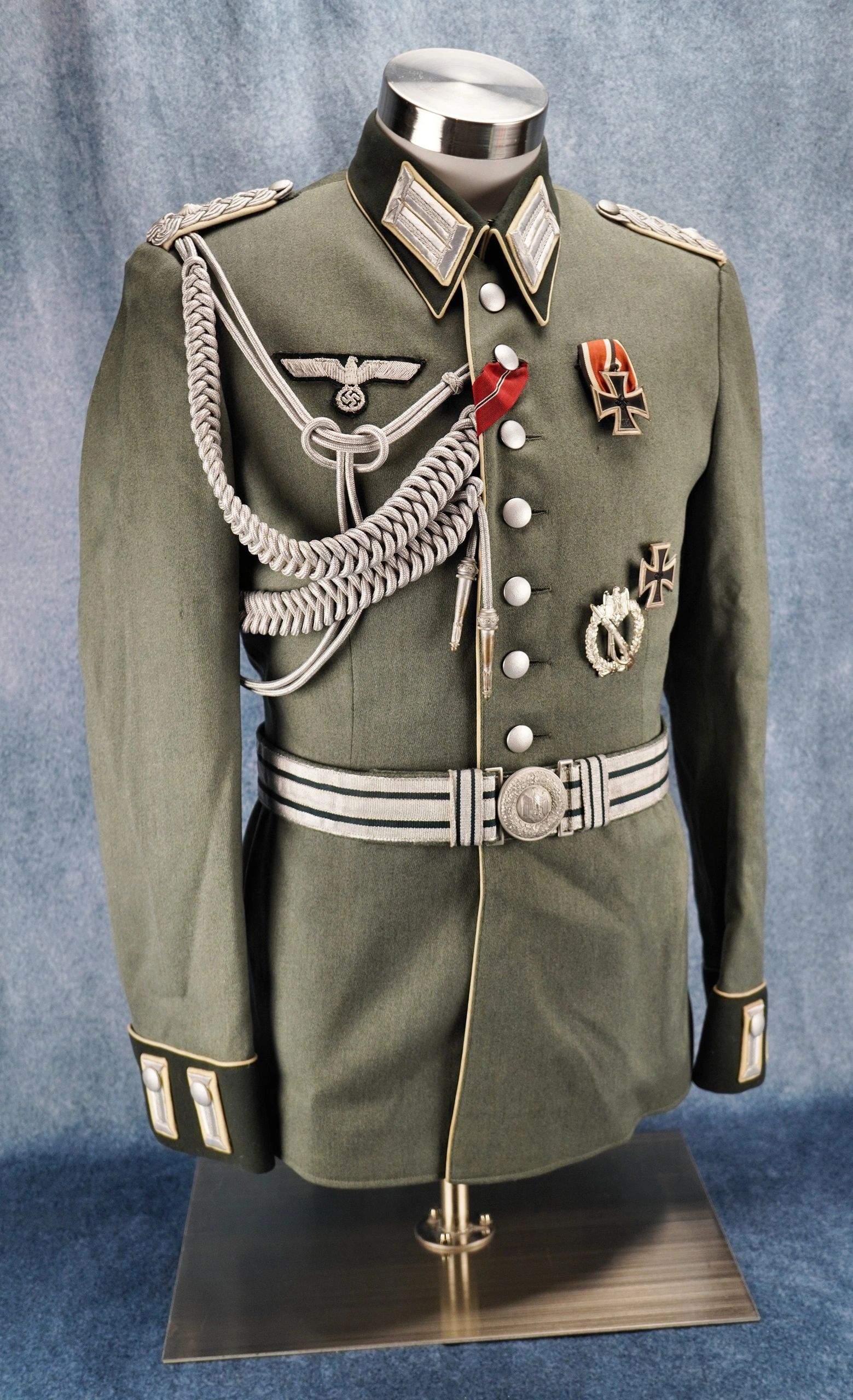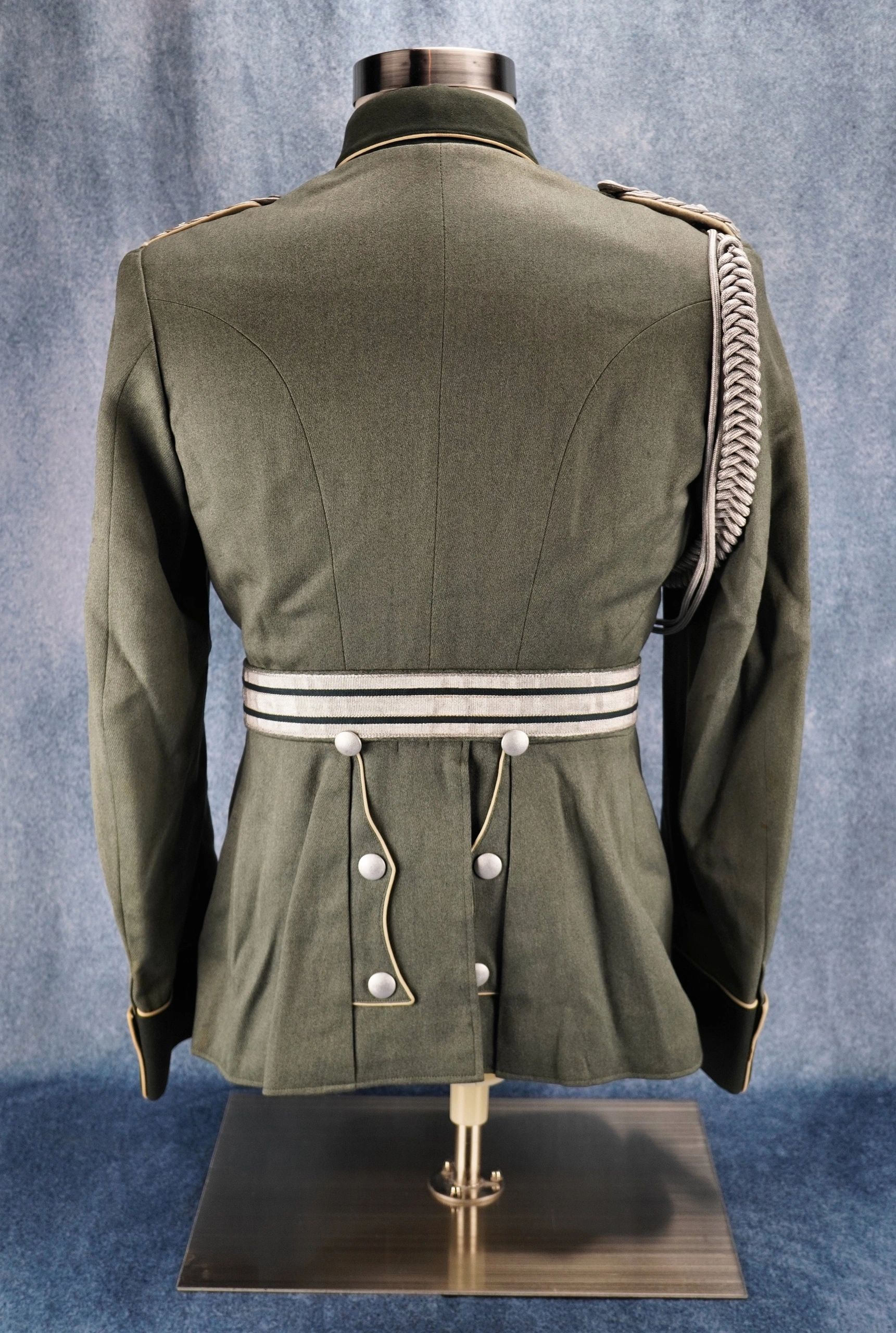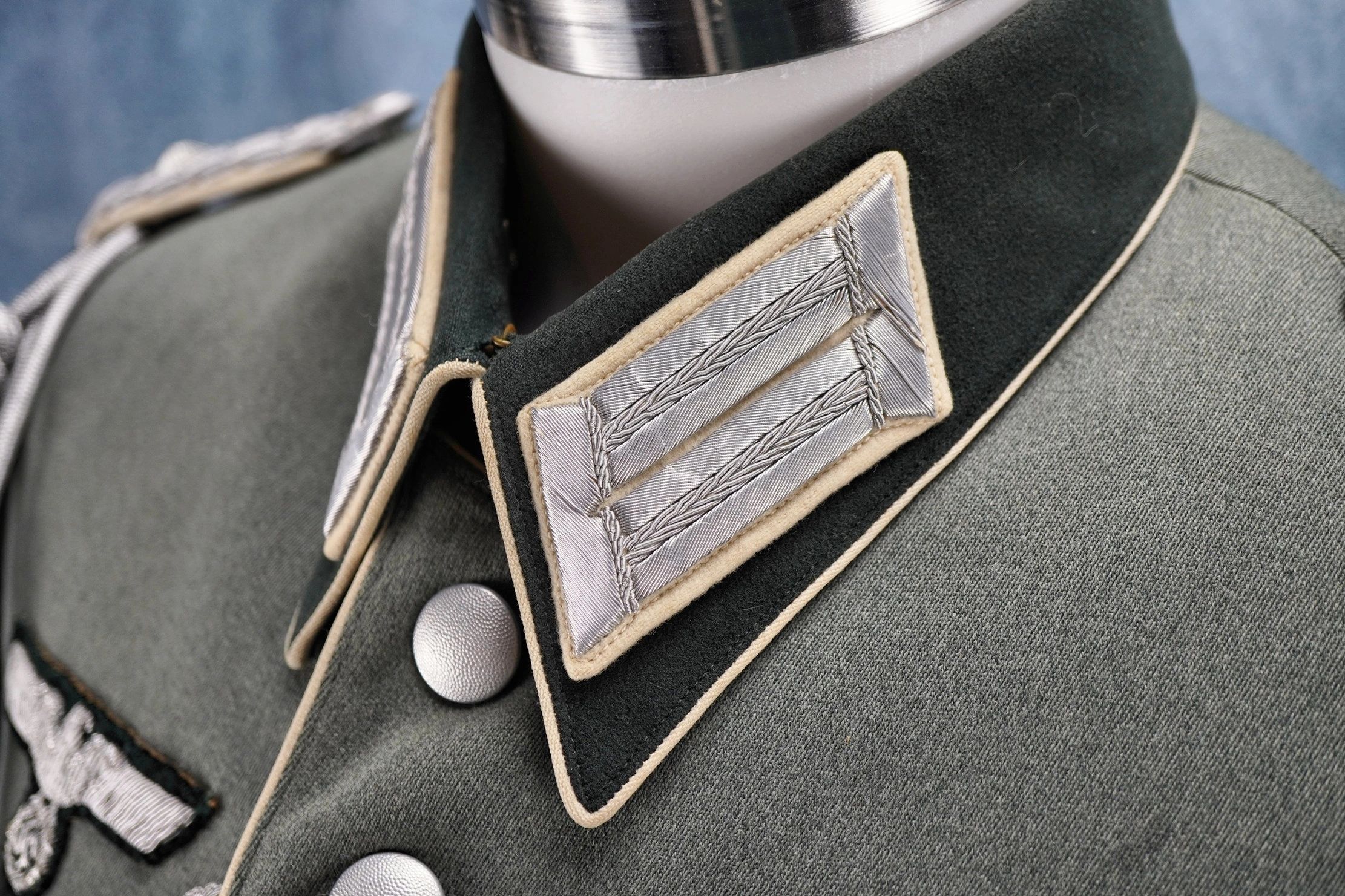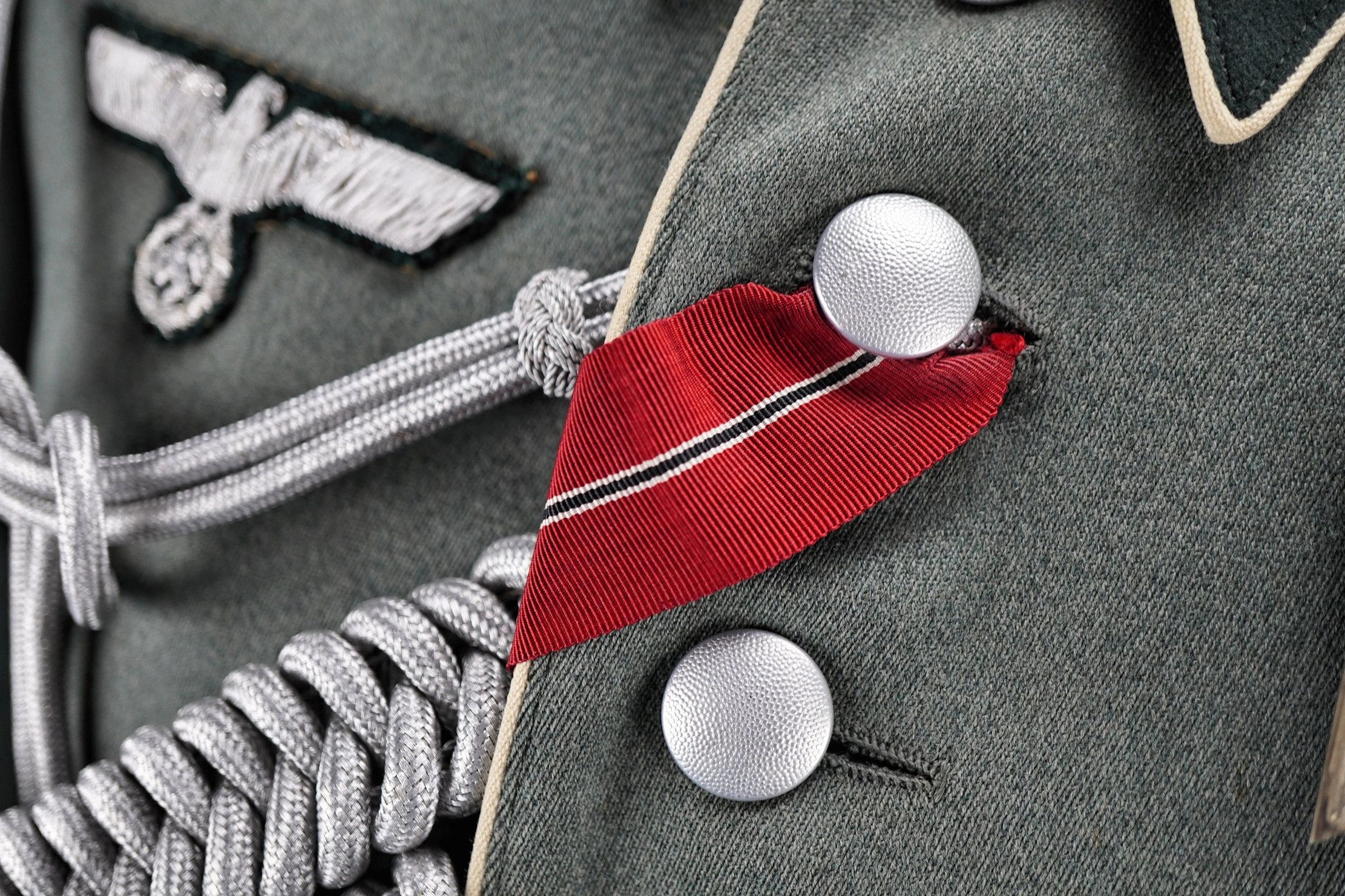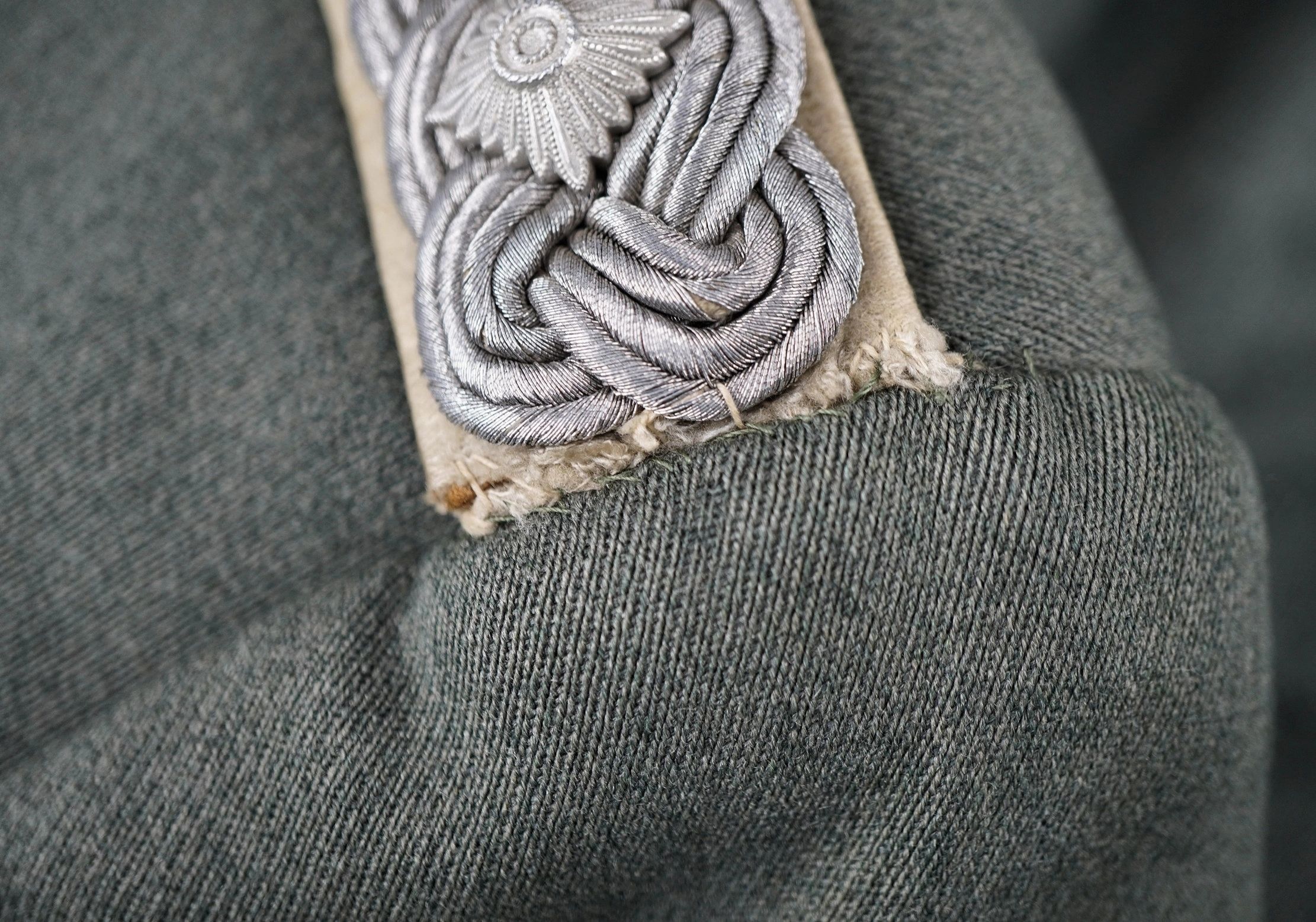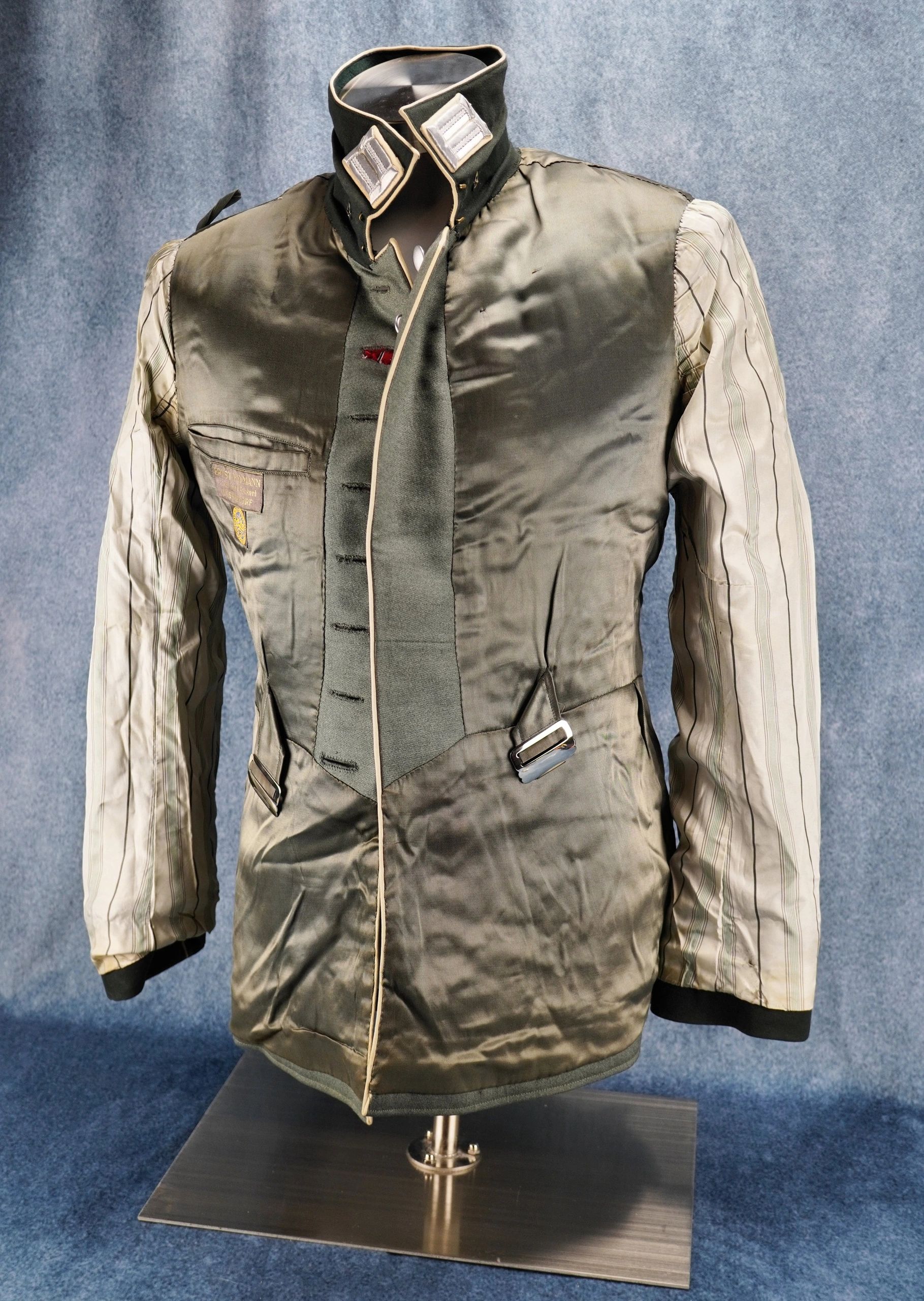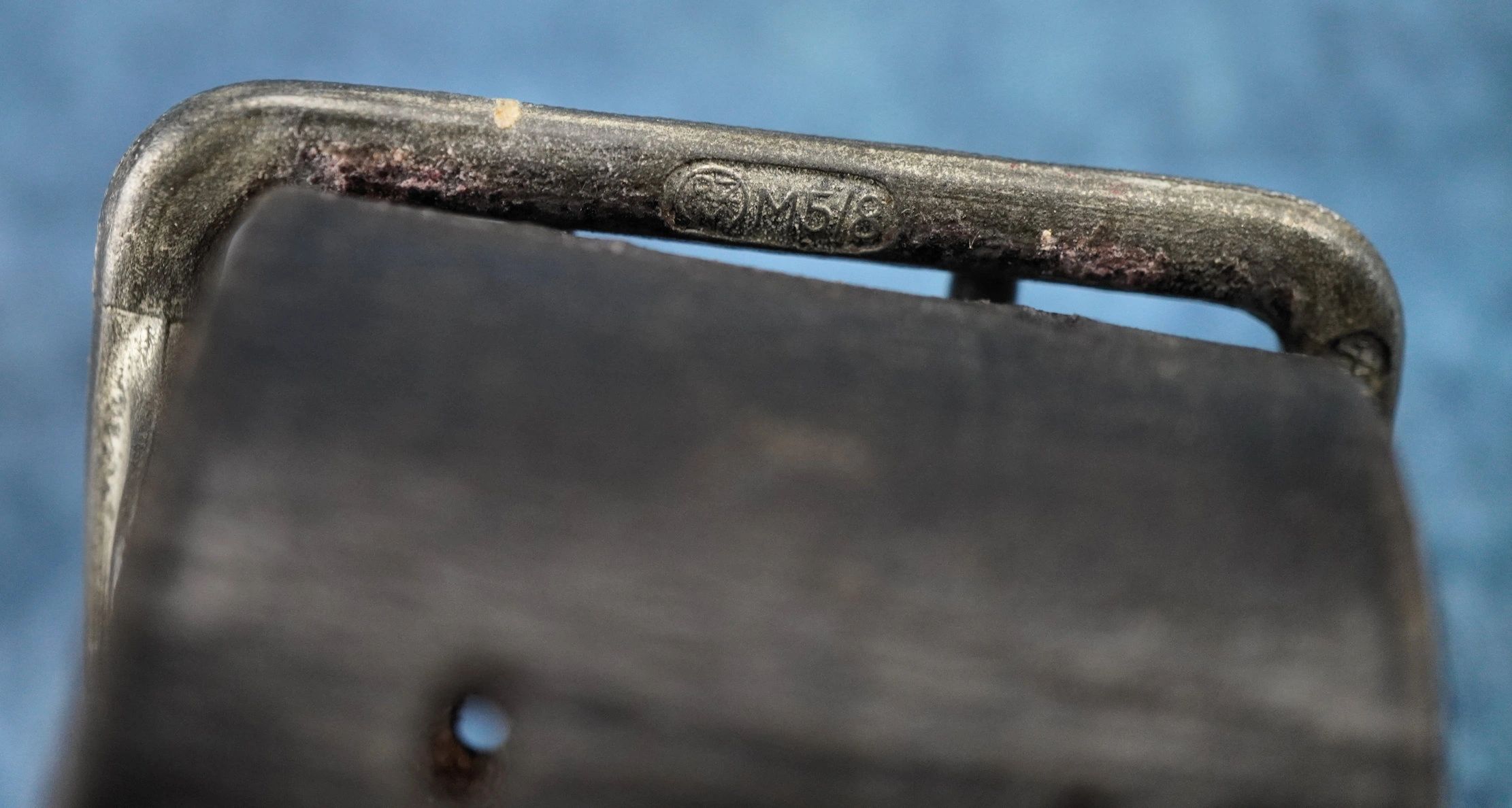Description
Here’s your chance to pick up a Infantry Officer waffenrock. The breast eagle is a nice bullion example as are the collar tabs. This jacket has 2 sets of award loops, as well as loops for a ribbon bar. Eastern front ribbon through the button hole. Name tag in the interior to Oberstleutnant Kabefeld. Period repair to one shoulder board. One removable shoulder button for a lanyard or aiguillette. The lining is in great shape with very minor wear. Tailor tag on the interior under the pocket for Ernst Baymann. This example is a stunner that would display well within any collection. The belt and buckle, awards, and lanyard are for photographic purposes only and are not included in this listing, but are for sale separately on the website.CLICK HERE to view more images of this item!The Heer was the land forces component of the Wehrmacht, the regular German Armed Forces, from 1935 until it ceased to exist in 1945 and then formally dissolved in August 1946. During World War II, a total of about 13.6 million soldiers served in the German Army. Germany’s army personnel were made up of volunteers and conscripts. Only 17 months after Adolf Hitler announced publicly the German rearmament program, the Army reached its projected goal of 36 divisions. During the autumn of 1937, two more corps were formed. In 1938 four additional corps were formed with the inclusion of the five divisions of the Austrian Army after the Anschluss in March. During the period of its expansion under Hitler, the German Army continued to develop concepts pioneered during World War I, combining ground (Army) and air (Luftwaffe) assets into combined arms forces. The German military managed quick victories in the two initial years of World War II, a new style of warfare described as Blitzkrieg for its speed and destructive power.Free shipping ANYWHERE IN THE WORLD & I don’t charge PayPal fees like some of the other guys!
